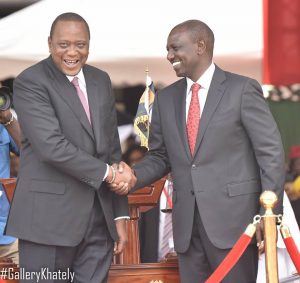Her Zimbabwe – The Rise of Artistic Activism in Africa
The Rise of Artistic Activism in Africa
By Keith Mundangepfupfu
When I was five, my favorite past time was coloring. My mother says I was terrible at it because I refused to listen to her or my teachers when it came to choosing which colour to use when coloring in specific images. I used to colour the sky purple, my people were orange and my trees were blue. This continued to happen till I was eight and by this time, my mother was beginning to think that I was mentally unstable. But my father called me a ‘spirited soul.’ I guess that was his nice way of calling his son crazy. However, I have come to realize that in order to make a loud enough sound in this world, you have to be crazy and colour the sky purple. And for me, this is what Artistic Activism is: coloring the sky purple so that people will notice.
Over the last ten years, there has been a significant growth on the continent of Artistic Activism. Artistic Activism is a form of art that represents and includes aesthetic, socio-political, and technological developments that attempt to challenge the traditional boundaries and hierarchies of culture represented by those in power. In simple terms, people use art to fight for socio-political change. The reason why Artistic Activism is starting to gather momentum in Africa is largely because of the growing middle class in Africa, the increase in civic awareness, the increase of the youth population and also the growth of the arts on the continent.
Boniface Mwangi -an artist and activist- is a young Kenyan who uses art to comment on the exploitative nature of his government. Mwangi was meant to be ordained as a minister in the church before he started photography. He says the reason he could no longer fulfil this calling was because “There was some restlessness that the Bible couldn’t quell.” He also uses his art to remind people of the 2007 post-election violence and why Kenya should continuously strive to seek for peace.
Mwangi is the founder of a non-profit organization called PAWA 254 which is a social company that empowers artists to use digital and visual art as well other forms to speak out against injustices and raise awareness. He is known to have led the Pig campaign in Kenya. For this campaign, Mwangi and many others painted pigs red and brought them to stand outside government buildings as a way to symbolize how members of the government were all greedy pigs.
In Zimbabwe, a young man called Kudzanai Chiurai found himself fleeing the country after he released paintings of the president burning in flames with bull horns on his head. Chiurai was speaking out against the extended rule of the president. He is currently residing in South Africa but still uses art to make his people aware of the situation they live in and the ability they have to take action.
Chinua Achebe was an activist who used his words as a way of speaking about issues he felt should be spoken about. His work spoke about the political landscape of pre and post-colonial Nigeria and the implications that colonization had on his country. He also wrote about the political strife his country faced.
In Egypt, female authors are using their voice to raise awareness against social constructs that are oppressing women such as lack of education, FGM and disempowerment of women.
In Kenya the youth constitute 32% of the population and 60% of the country’s active labor force. The last decade has seen an explosive growth of the Kenyan performing arts and broader entertainment industry as a result of young people using the arts to get employment. As a result, numerous platforms for artistic expression have emerged at the grassroots level. More importantly, artistic expression has taken root as a means for youth to communicate their frustrations and inform and educate each other about social, economic and political matters directly affecting them.
These statics can largely be extrapolated for a greater number of the countries on the continent such as South Africa, Zimbabwe, Tunisia, Egypt and Nigeria where we find a growing number of artists using different mediums of art to criticize and shed light on the socio-political issues happening in their communities. Artistic Activism is not something new. It has been something that has been there for a very long time. Some artists living on the continent even argue that, one cannot be an artist in Africa and not be an activist.
Artistic Activism is less about the artist and more about the citizen. It is more than just a song, a film, a poem, a piece of art or narrative: it is a call to take action.
Artistic Activism is a form of protest that speaks to the youth of today. It is a form of protest that speaks to me and you and every single one of us. I am not only a citizen, I am also an artist. I have decided to become part of the rising tide of young people across Africa who are speaking out against social injustices.
I choose to take a stance and demand a better Africa.
Thomas Jefferson once said, “Every generation needs a revolution.” Africa is on the verge of a renaissance and my generation is right at the cusp of this. I choose to use art to bring about the revolution we need if we are to realize our full potential.
This article first appeared on Her Zimbabwe’s His Africa section.




